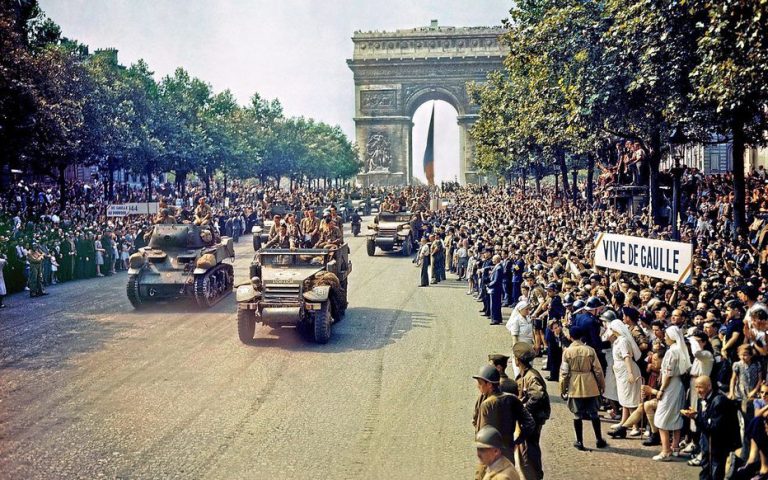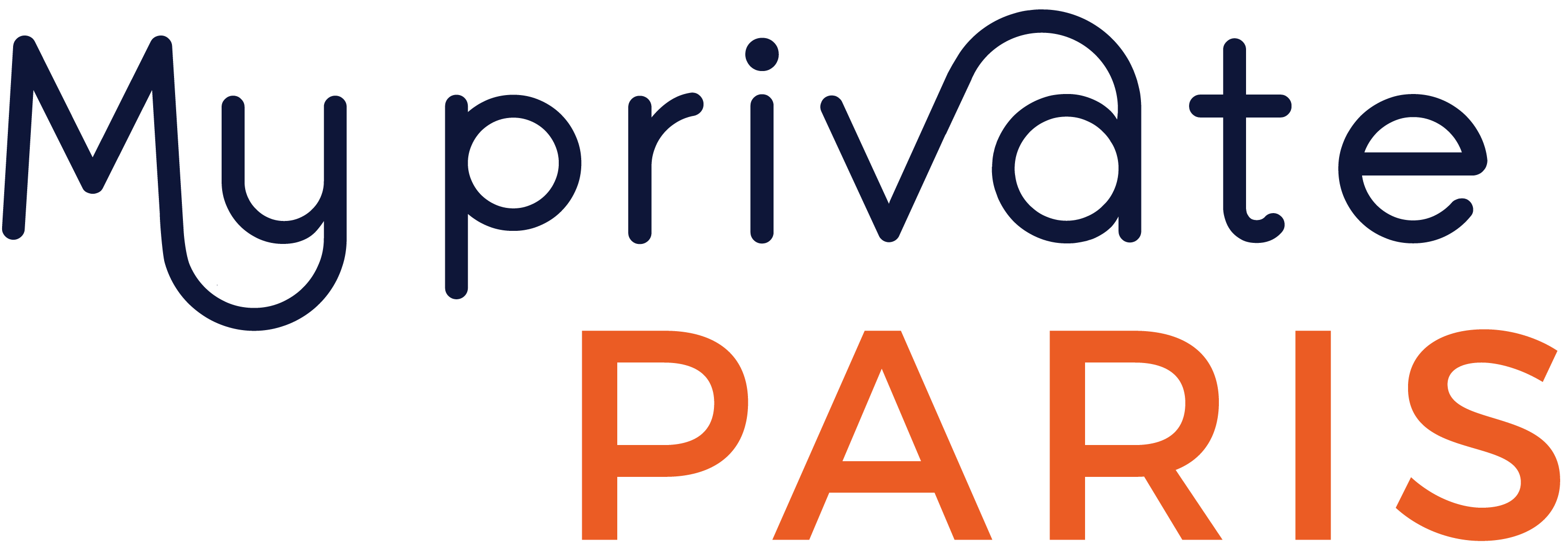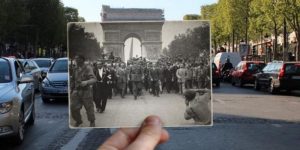Good time to talk about Paris in WW2 as this year, August 25 marked the 75th anniversary of the Liberation of Paris. The Liberation of Paris was a 6 day battle that culminated with the surrender of Paris, which had been under Nazi rule since June 1940.
The Occupation was a terrible time for Paris during which Parisians had to endure limited freedom, greatly reduced food supplies, and an overall sense of fear of what was to come. During these years, Paris became a very dark place: both literally and figuratively.

The Occupation
Life was of course the most difficult for Paris’ Jewish citizens, many of which lived in Le Marais. Jews were forced to wear the yellow star and many were no longer allowed to work and banned from certain public places. In July 1942, their homes were raided and they were arrested in what is referred to as the Vel d’Hiv Roundup. German soldiers were assisted by the French police who arrested about 13,000 Jews. After being held at the Velodrome d’Hiver, the Jews were sent to Auschwitz.
The headquarters of the Nazis was located at the Hotel Meurice on Rue de Rivoli and the German soldiers would march down the Champs-Elysees everyday. Only the Germans were allowed to ride in cars, so Parisians could only take the bus or the metro. Many chose to get around by bikes or even by horses. A curfew was also implemented which meant Parisians had to be inside their homes after 9pm.
Food Rationings
The Nazis first implemented a series of food rationings during the summer of 1940 starting with bread, fat and flour. Everyone was given a ration book of vouchers which they would then exchange for the desired commodity. Shops were only allowed to be open on certain days of the week for a few hours. Parisians were forced to wait in very long queues for everything they were allowed on their precious ration cards. Afterwards, milk, butter, cheese and meat were rationed. Adults were allowed to have 2.5 ounces of boneless meat a week. Much of the food that was being produced in France was being sent directly to serve the German war effort, which led to the severe food shortages in France. Some secretly raised pigs or rabbits in their basements which they would have to slaughter at night, using hammers. There were accounts of people eating dogs and cats and even rats. Additionally, commodities like soap, coal and clothes were rationed.
The Resistance
The Nazi flag flew from the Eiffel Tower. Everyday places like cafes, restaurants and shops were taken over by Nazi soldiers as well as collaborators, and everything in Paris was at their disposal including food, museums and theatres. Before the Occupation, the director of the French Musées Nationaux made a plan to move priceless artworks from museums like the Louvre to the Provinces before the Germans arrived. In 1939, the Louvre closed for three days and works of art were sent to the Château of Chambord. Throughout the war, the works of art were transported from chateau to chateau to keep them hidden. However, the art that remained in Paris during the Occupation was confiscated by the Germans, including all the private collections of the wealthy Jewish citizens.
As many as 1 million Parisians chose to leave the city for the Provinces or for other countries during the population. For those that stayed behind, many were inspired to join the resistance after hearing Charles de Gaulle’s great radio speech, L’appel du 18 juin, which he delivered from London.
Book online now our Paris & Parisians During World War II Walking Tour and get a close look into life in Paris under Nazi occupation.
Coming to Paris soon? Let us design your dream Paris vacation! Request a custom itinerary of Paris here:




